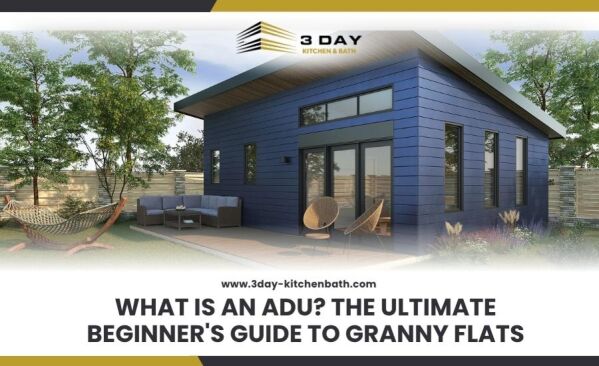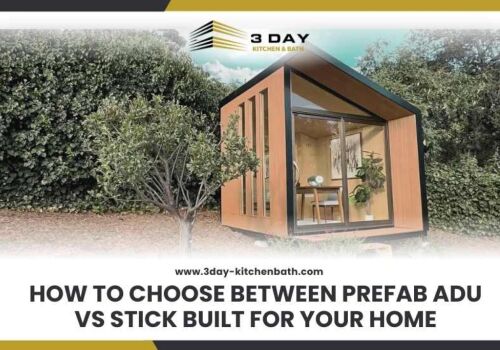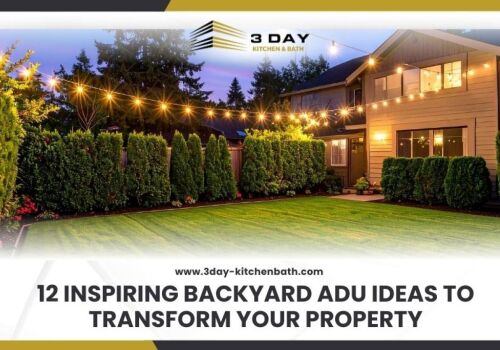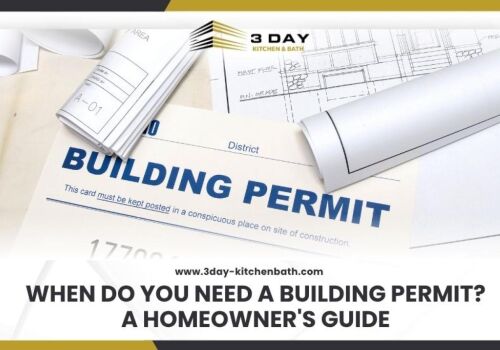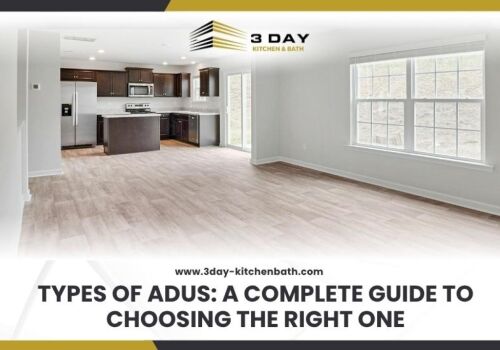Imagine having a separate, private space on your property for aging parents, a rental unit to generate extra income, or a dedicated home office away from the main house. This flexibility and financial benefit are why so many homeowners are asking, what is an ADU? An ADU, or Accessory Dwelling Unit, is a secondary housing unit built on the same lot as a larger, primary home.
This guide explains the official definition, the common names people use for them, the main types you can build, and the key rules to consider.
- What is an Accessory Dwelling Unit (ADU)?
- Common Names for ADUs
- Granny Flat / In-Law Suite
- Casita / Guest House
- Backyard Cottage / Laneway House
- The 4 Main Types of ADUs
- 1. Detached ADU
- 2. Attached ADU
- 3. Conversion ADU
- 4. Junior ADU (JADU)
- Can I Build an ADU on My Property? Key Rules & Considerations
- Zoning Laws & Setbacks
- Parking Requirements
- Permitting Process
- The Big Question: Cost & Financing
- Is an Accessory Dwelling Unit Right for You?
- Frequently Asked Questions
- What qualifies as an ADU?
- What is the main purpose of an ADU?
- Can I build an ADU on my property?
- What is the difference between an ADU and a guest house?
- Is a tiny home an ADU?
What is an Accessory Dwelling Unit (ADU)?
The core of the accessory dwelling unit is that it must provide all the basic amenities for daily life. To legally qualify as an ADU, the unit must have:
-
A separate entrance from the main house.
-
A dedicated sleeping area (this can be a bedroom or a studio-style space).
-
A bathroom.
-
A kitchen with cooking facilities.
These requirements ensure the unit is a complete, habitable home, not just a spare room. This legal status is what allows it to be rented out and what adds significant property value.
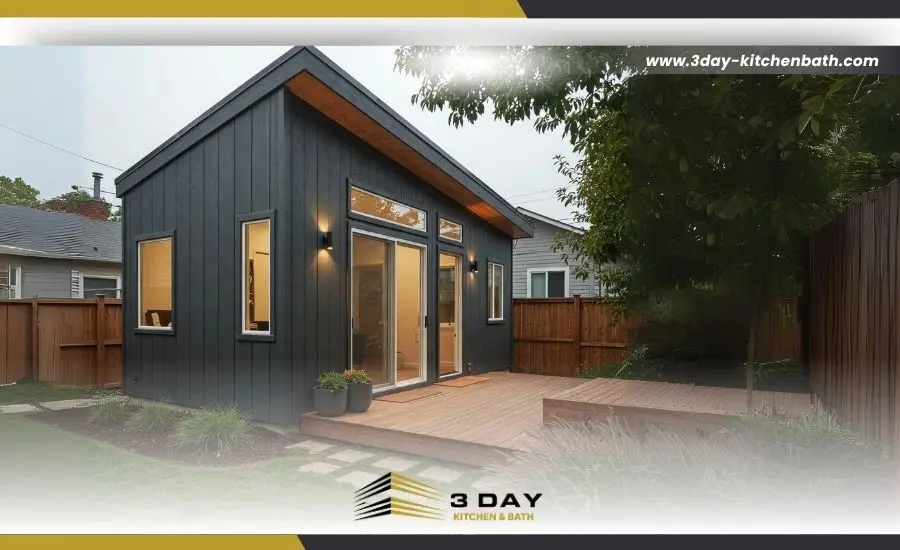
Common Names for ADUs
While "ADU" is the official term used by city planners and builders, you have likely heard these structures called by many other, more descriptive names.
Granny Flat / In-Law Suite
A granny flat or in-law suite is the most widely known term for an ADU. These names highlight one of the original and most popular uses for these units: providing a nearby, yet private, home for aging parents or other relatives. This setup is a cornerstone of multi-generational living, allowing families to stay close and support one another.
Casita / Guest House
These terms often describe a small, detached backyard structure. However, there can be a key difference: a simple guest house might not have a full kitchen. A structure without cooking facilities does not meet the legal definition of an ADU and often cannot be legally rented out long-term.
Backyard Cottage / Laneway House
These names are typically used for detached ADUs built in a property's backyard. "Laneway house" is common in areas where homes are accessible from a rear lane or alleyway. Both terms describe a small, private home that is physically separate from the main house.
The 4 Main Types of ADUs
There are four primary types of ADUs, and the best one for your property depends on your budget, available space, and local regulations.
1. Detached ADU
A detached ADU is a standalone structure, completely separate from the main house. This could be a new, ground-up backyard cottage or a conversion of a detached garage. This type offers the most privacy for both the occupants of the main home and the ADU, making it an excellent option for generating rental income through passive income.
2. Attached ADU
An attached ADU is built as an addition to the main house, sharing at least one wall. It still must have its own separate entrance and cannot have an interior door connecting it to the primary residence. This is often a good choice for lots where there isn't enough space for a detached structure, and can be a more cost-effective build.
3. Conversion ADU
A conversion ADU repurposes existing space within the home's original footprint. This is one of the most popular and affordable ways to add a legal dwelling unit. Common examples include converting a basement, attic, or attached garage into a self-contained apartment. This adds living space and value without expanding the building's exterior.
4. Junior ADU (JADU)
A Junior Accessory Dwelling Unit (JADU) is a specific and more limited type of conversion ADU. A JADU must be 500 square feet or smaller and be created from existing space within a single-family home. They are required to have an efficient kitchen and may share a bathroom with the main house. In many areas, the property owner must live in either the main house or the JADU.
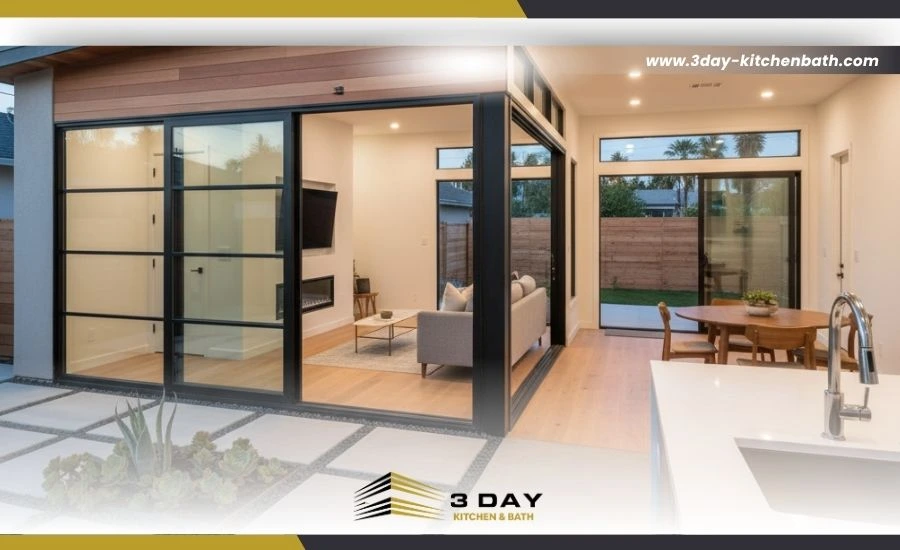
Can I Build an ADU on My Property? Key Rules & Considerations
Yes, you may be able to build an ADU, but the ability to do so is governed by local rules and regulations. Before you start planning, you must investigate the specific ADU requirements in your city or county.
Zoning Laws & Setbacks
Zoning laws dictate what you can build on your property. These rules cover minimum lot size, maximum ADU size, and height restrictions. Setbacks are rules that define how far a structure must be from your property lines, which is a critical factor in determining where, or if, an ADU can be placed.
Parking Requirements
In an effort to encourage more housing, many cities have relaxed or even eliminated parking requirements for ADUs, especially if the property is located near public transit. This change has made it possible for many more homeowners to build an ADU where it was previously not allowed.
Permitting Process
Building a legal ADU requires getting permits from your local planning and building departments. This process is not optional; it ensures the unit is safe, built to code, and legally recognized as a habitable dwelling. An unpermitted unit can lead to fines and will not add to your home's official property value. For a detailed walkthrough, you should consult a guide on ADU Rules & Permitting.
The Big Question: Cost & Financing
The cost of an ADU can range from tens of thousands for a simple conversion to hundreds of thousands for a custom detached unit. The final price depends on the type, size, materials, and local labor costs. Common financing options include a cash-out refinance, a home equity line of credit (HELOC), or a construction loan.
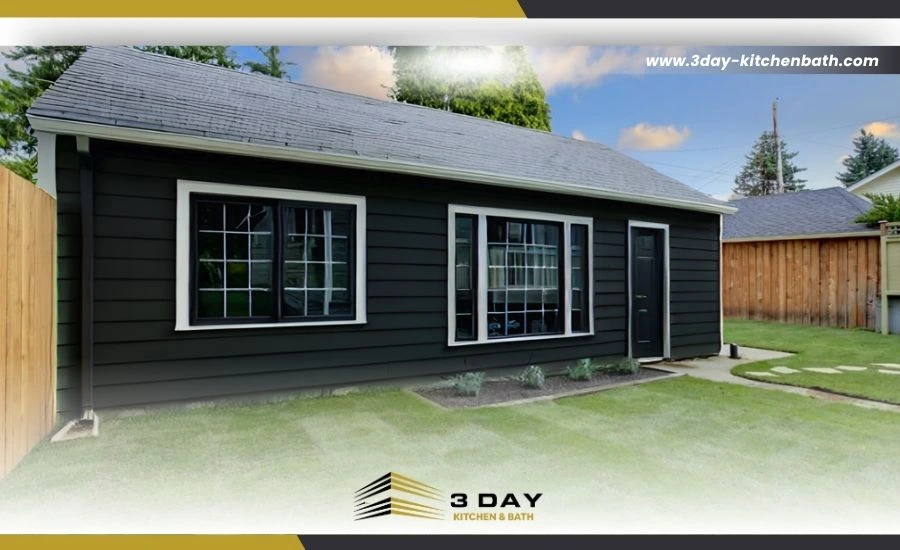
Is an Accessory Dwelling Unit Right for You?
An Accessory Dwelling Unit is a versatile, self-contained home that can provide valuable living space, create a new source of income, and significantly increase the value of your property. By understanding what it is, the different types of ADUs, and the local rules, you can make an informed decision.
While the process can seem complex, the benefits are often well worth the effort. At 3 Day Kitchen & Bath, our ADU contractors in San Diego specialize in helping homeowners navigate the world of ADU construction.
Frequently Asked Questions
What qualifies as an ADU?
A structure qualifies as an ADU if it is a secondary dwelling on a residential lot that includes its own separate entrance, kitchen, bathroom, and sleeping area. It must be legally permitted by the local planning department.
What is the main purpose of an ADU?
The main purposes of an ADU are to provide housing for family members, generate rental income, and increase the housing supply in a community. For homeowners, it also adds flexibility and significant property value.
Can I build an ADU on my property?
Whether you can build an ADU depends entirely on local regulations, including zoning laws, lot size, and setback requirements. The first step is always to check with your city or county's planning department.
What is the difference between an ADU and a guest house?
The key difference is the kitchen. A legal ADU is required to have cooking facilities, making it a self-sufficient dwelling. A guest house may not have a kitchen and is typically considered a non-habitable space that cannot be legally rented out.
Is a tiny home an ADU?
A tiny home can be considered an ADU, but only if it is placed on a permanent foundation and meets all local building codes for a residential dwelling. A tiny home on wheels is legally considered a recreational vehicle (RV) and does not qualify as an ADU.

